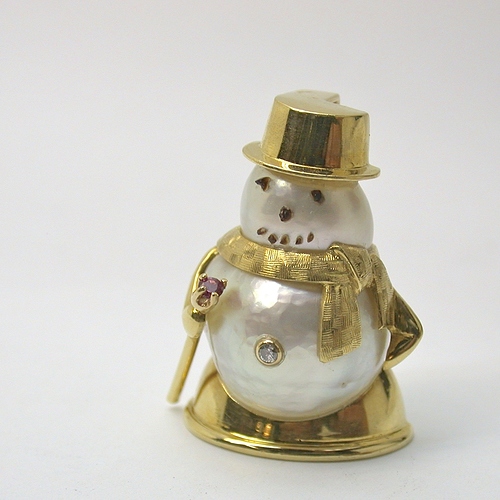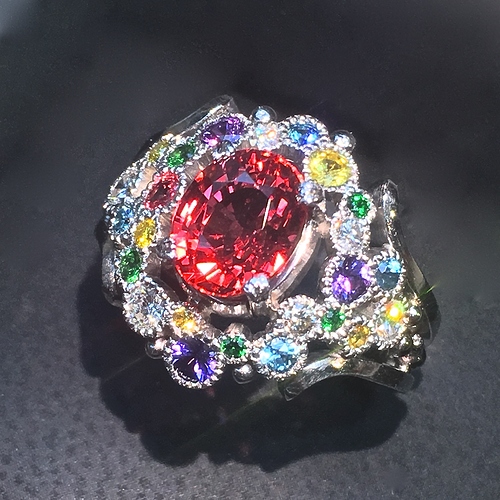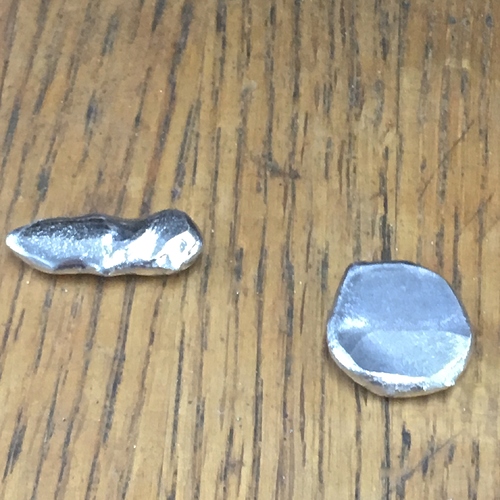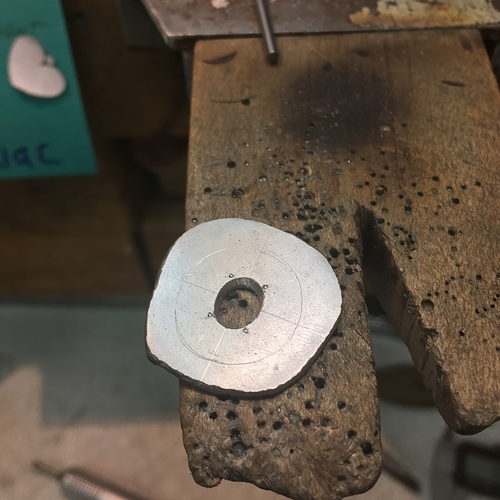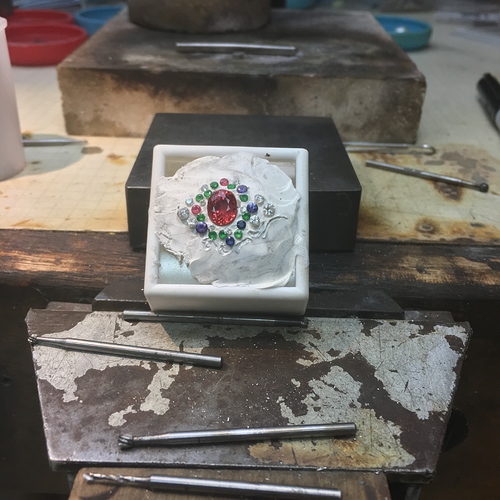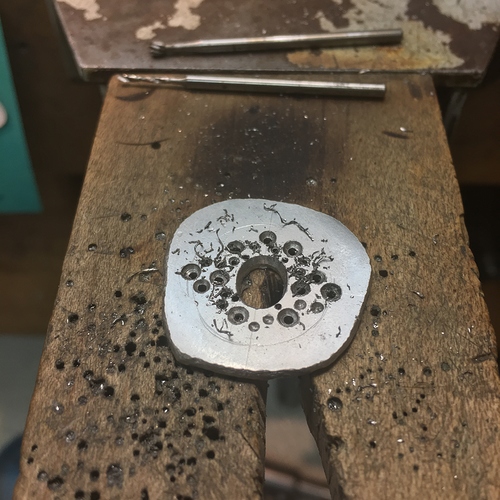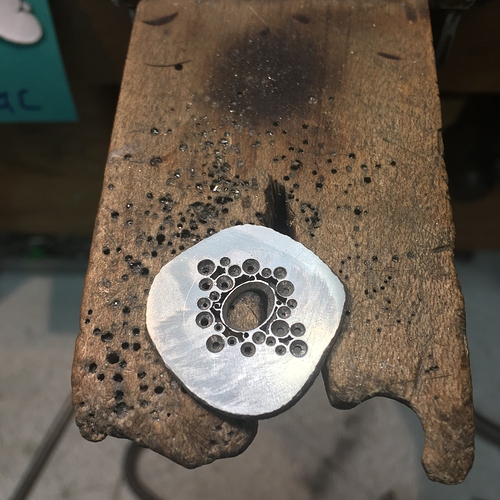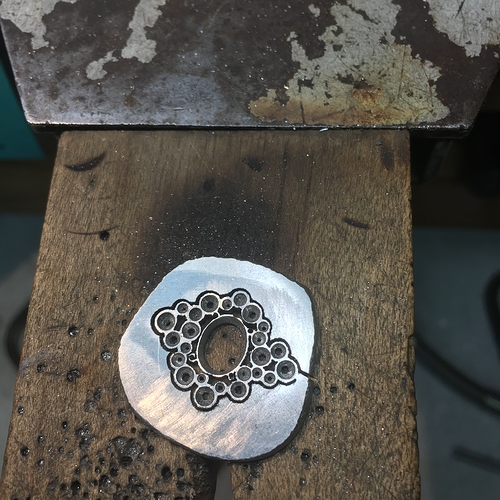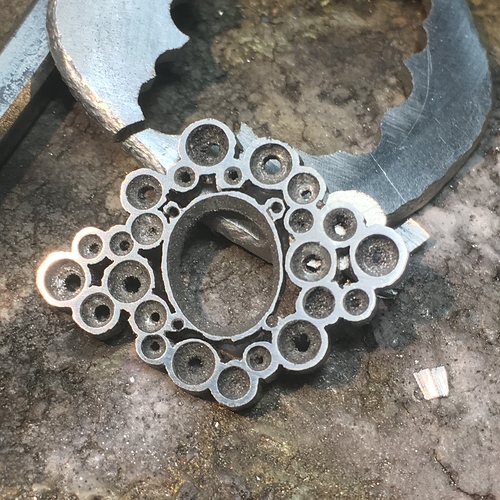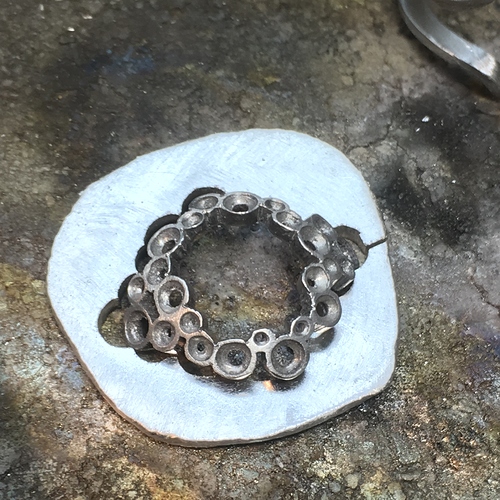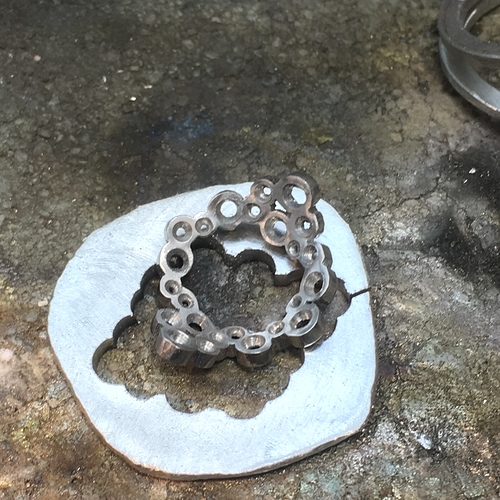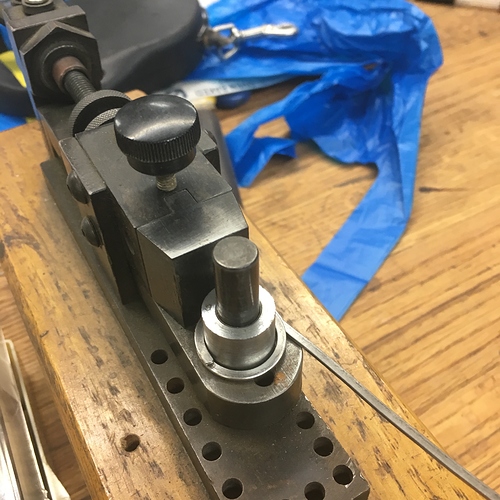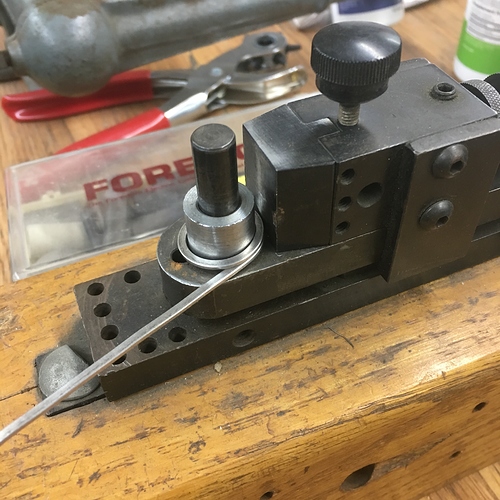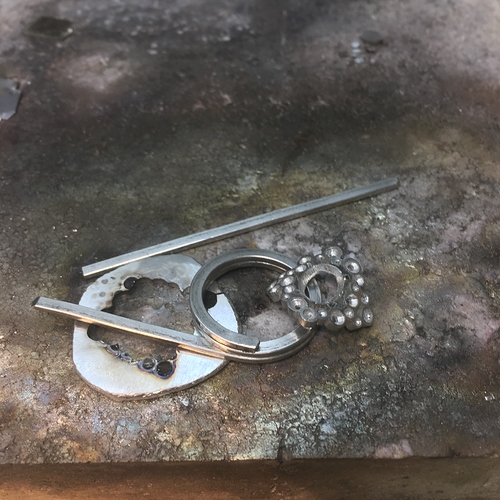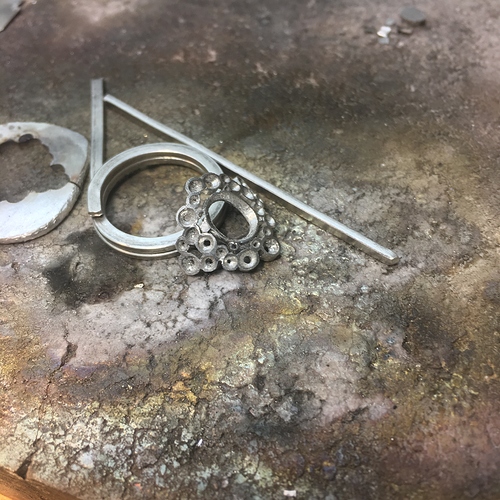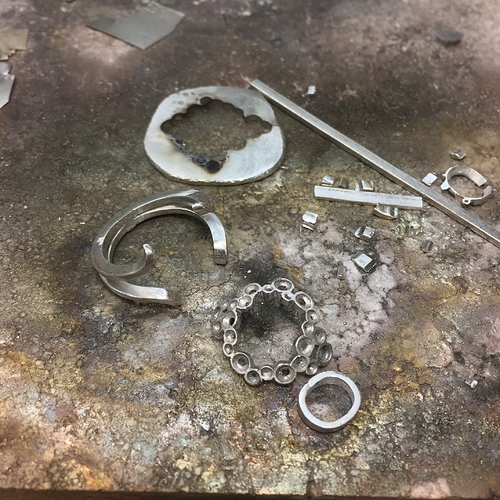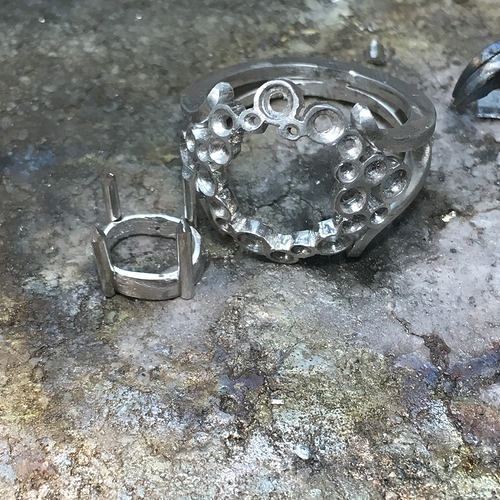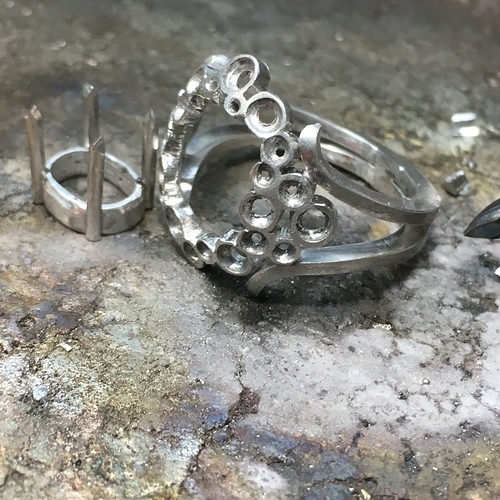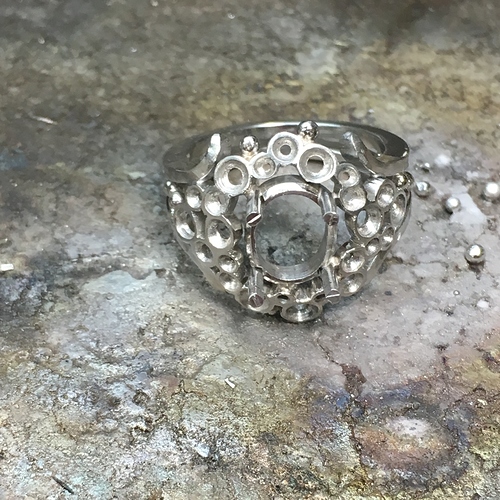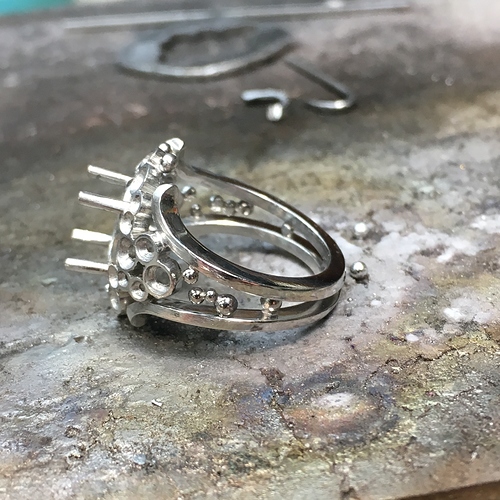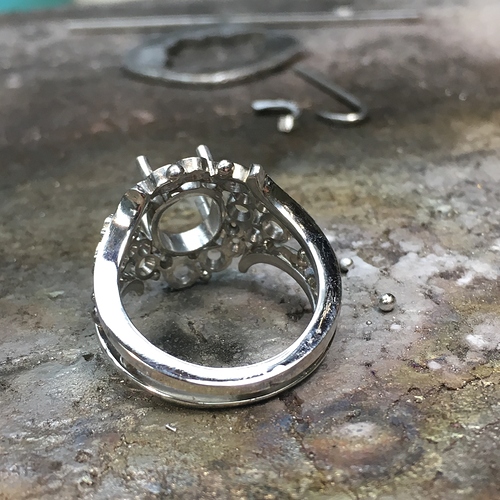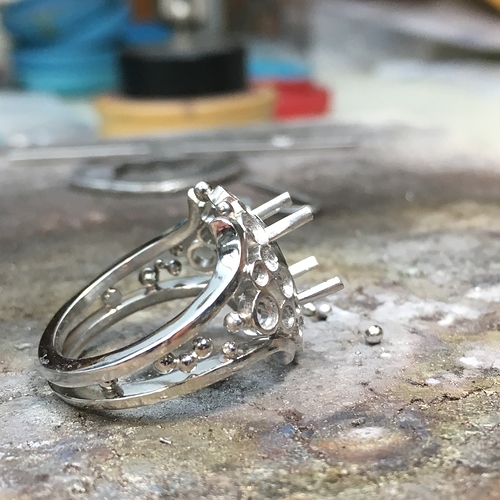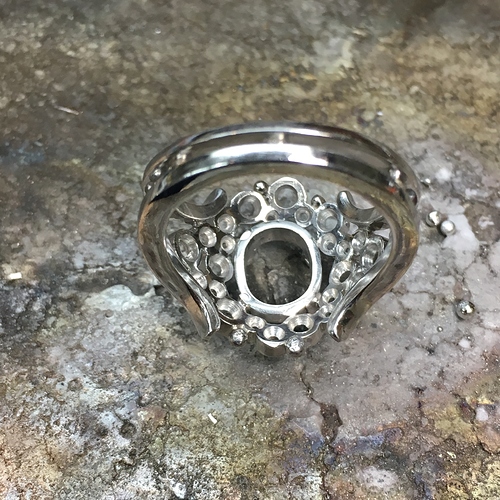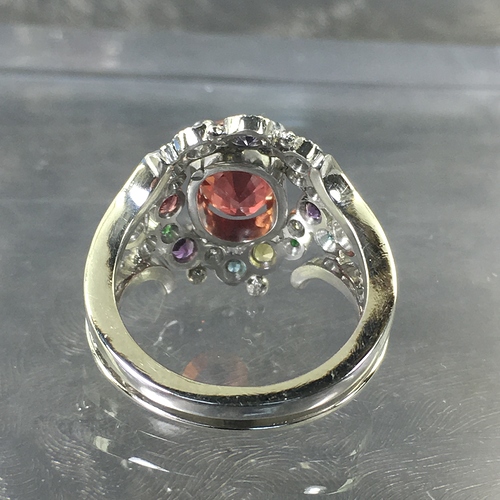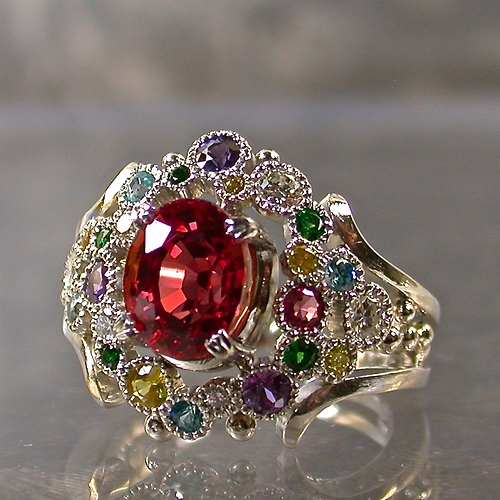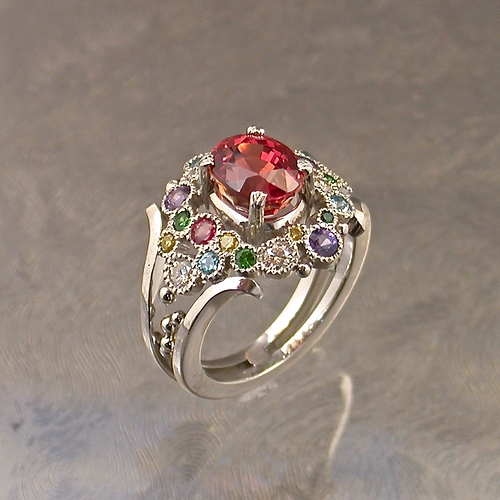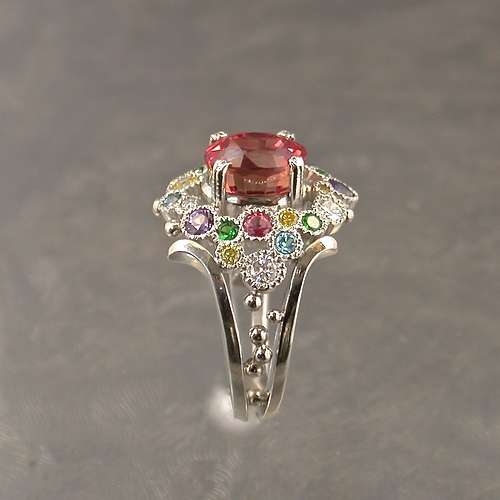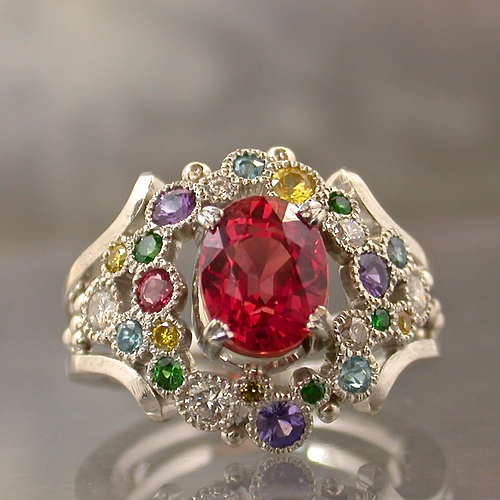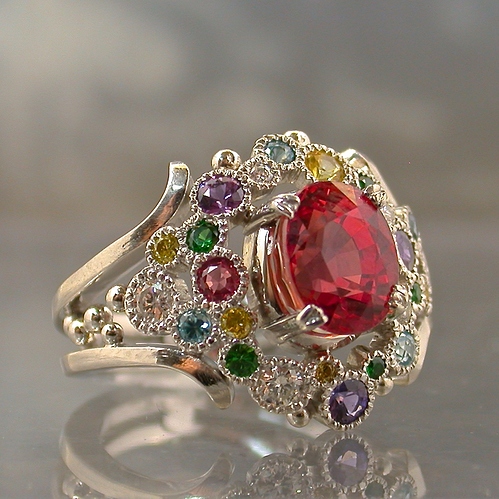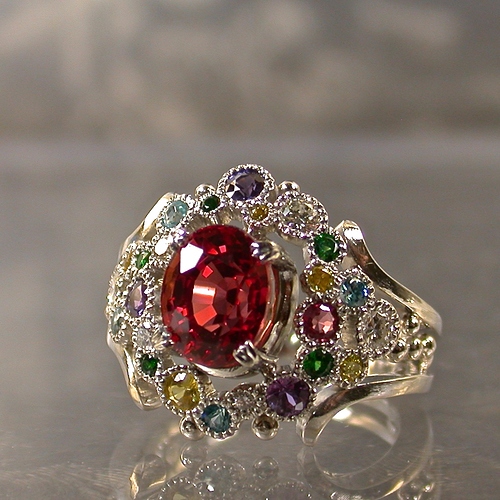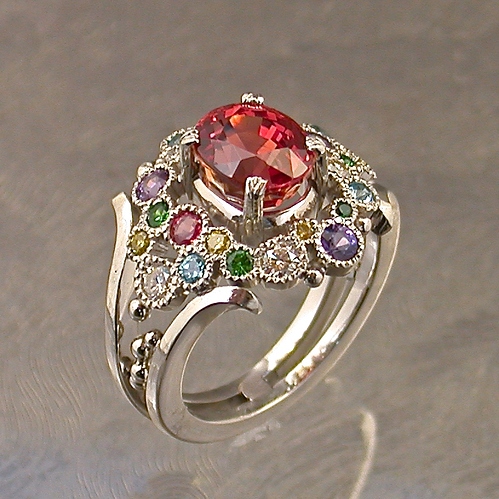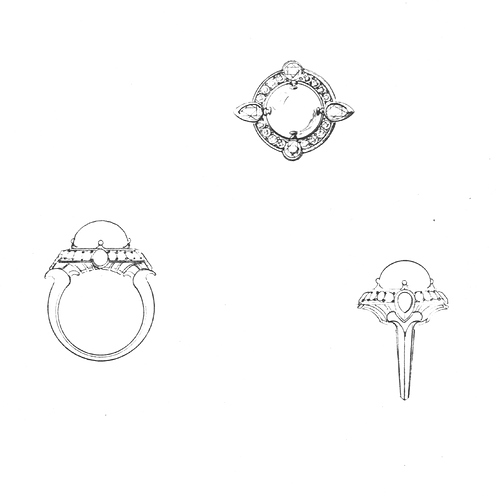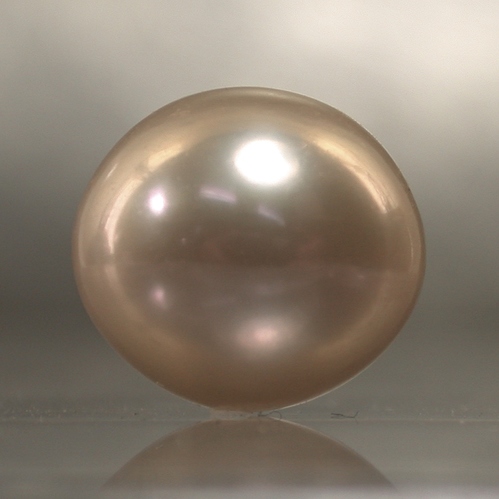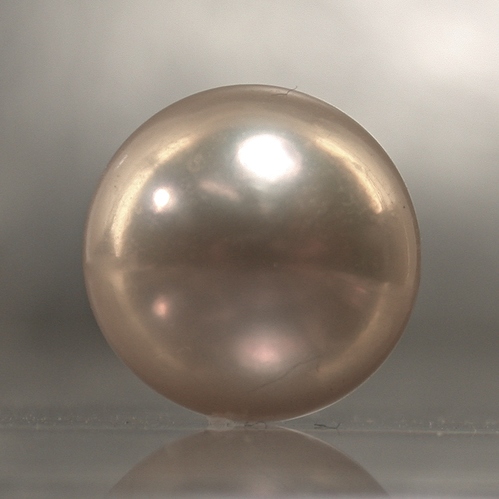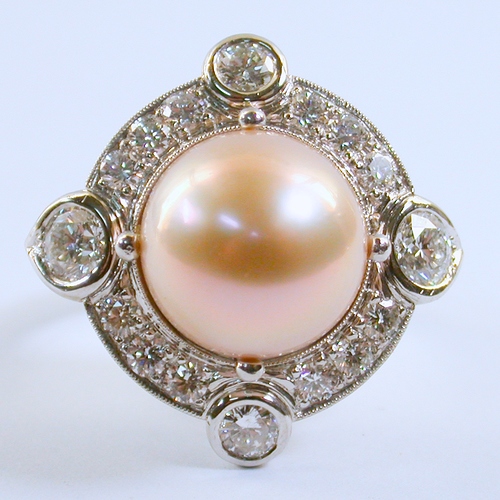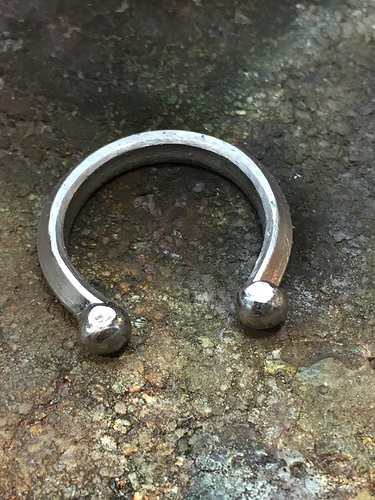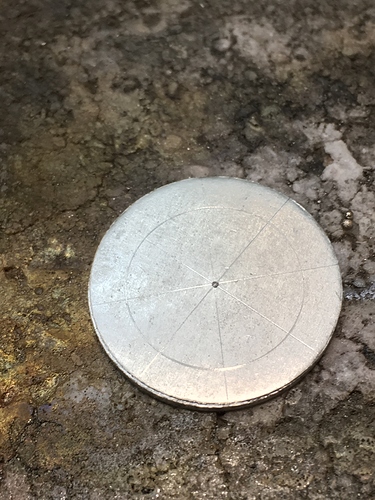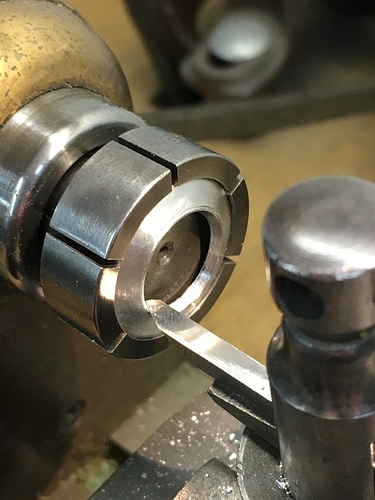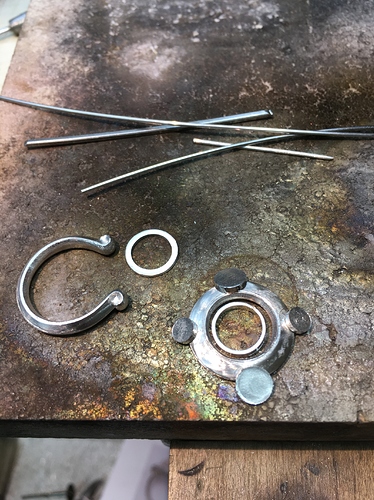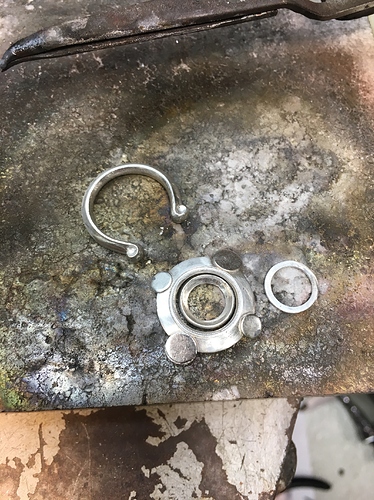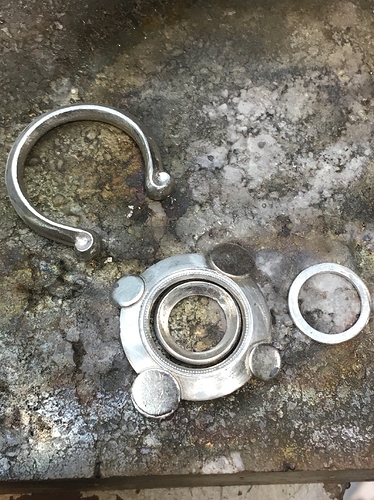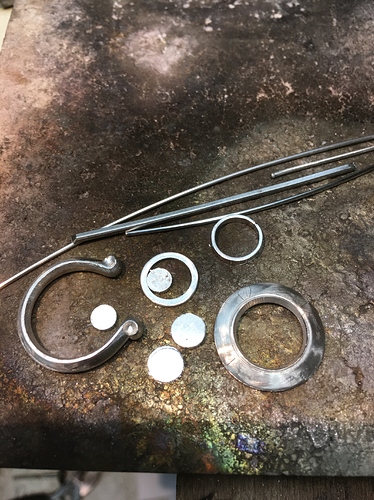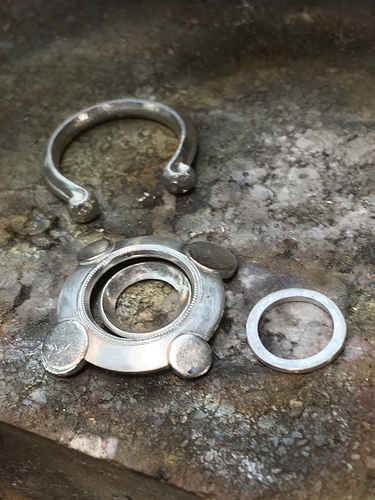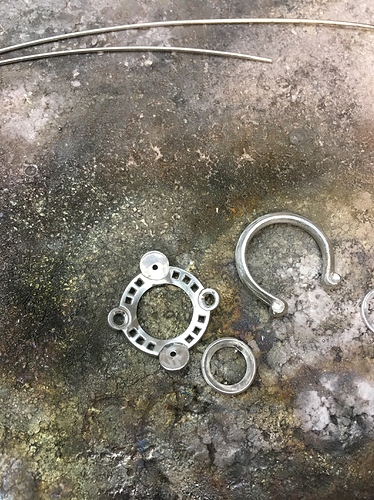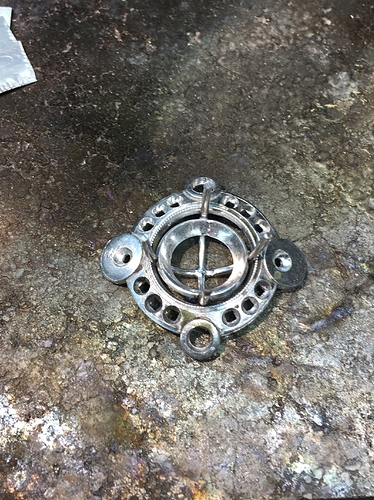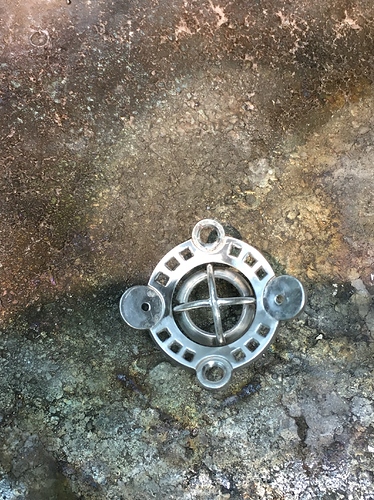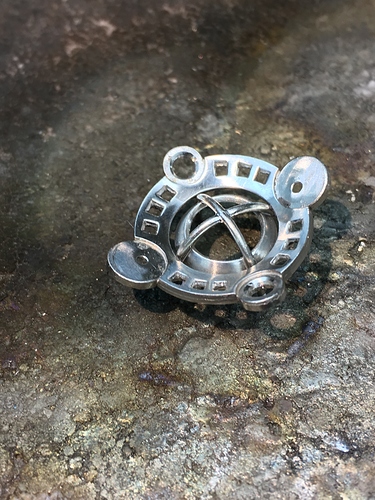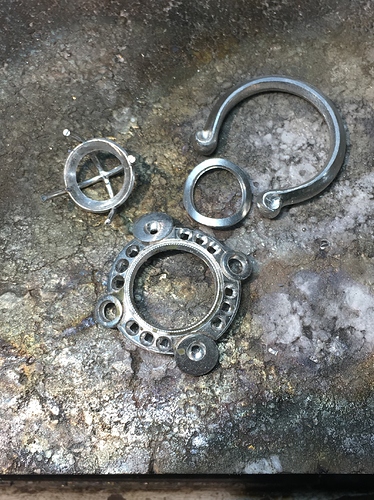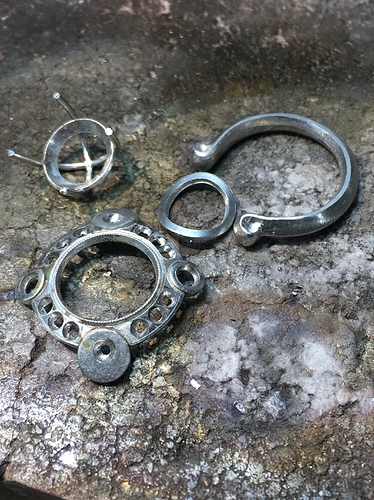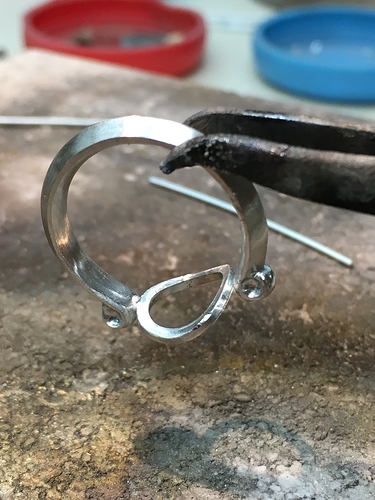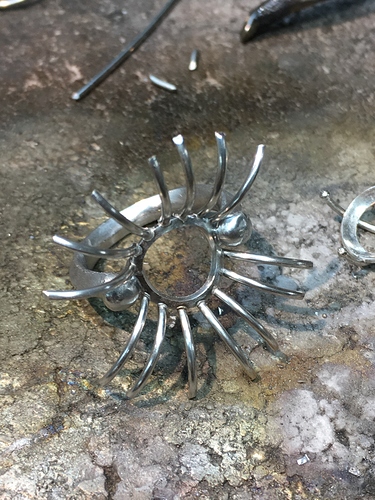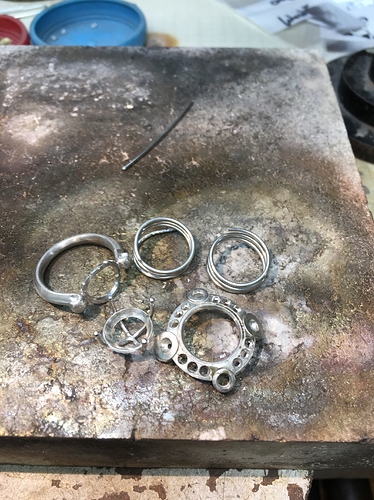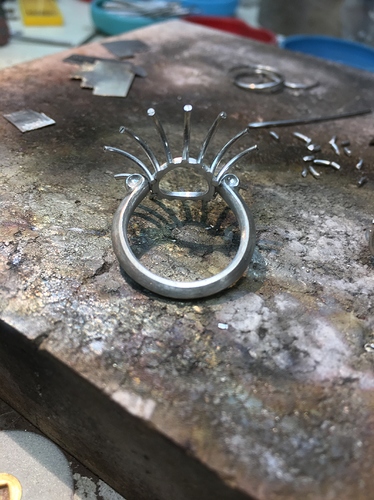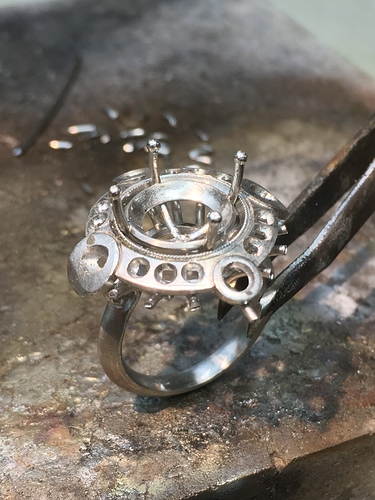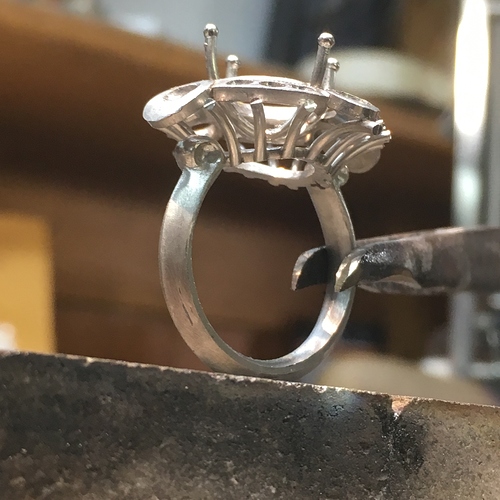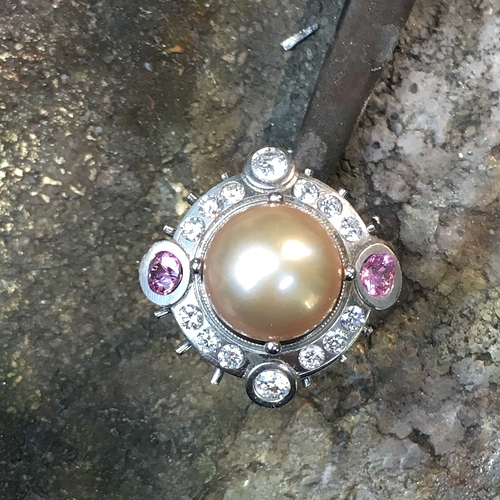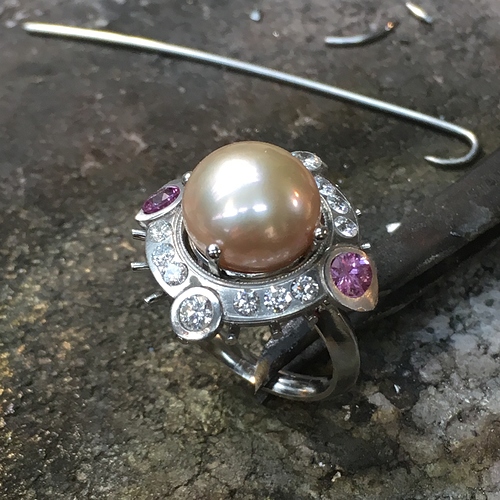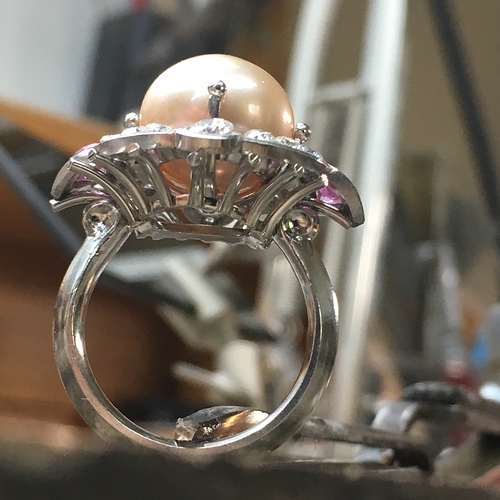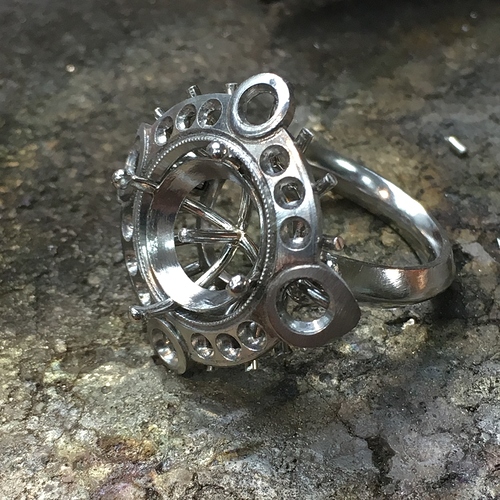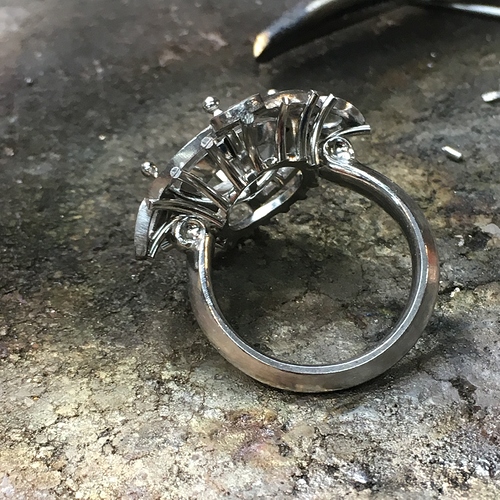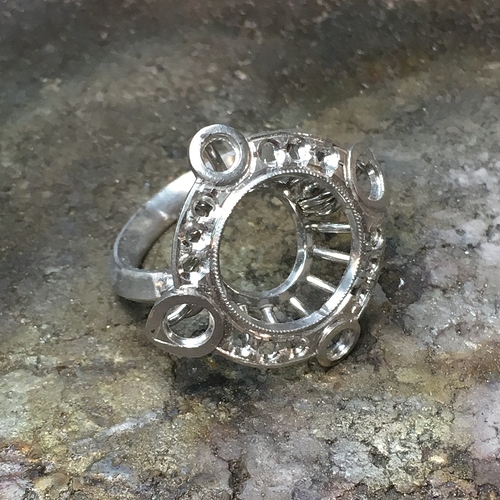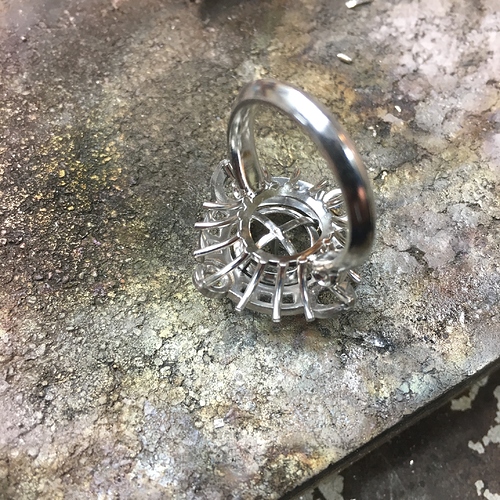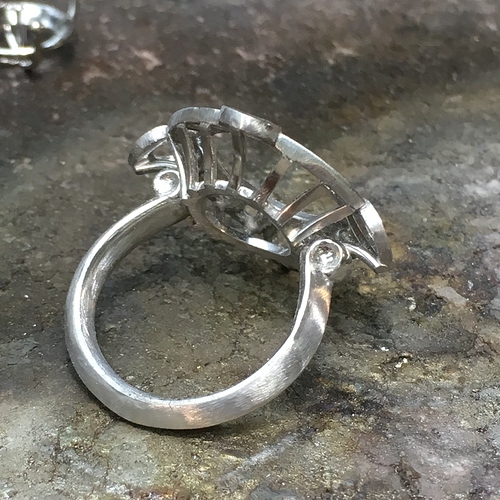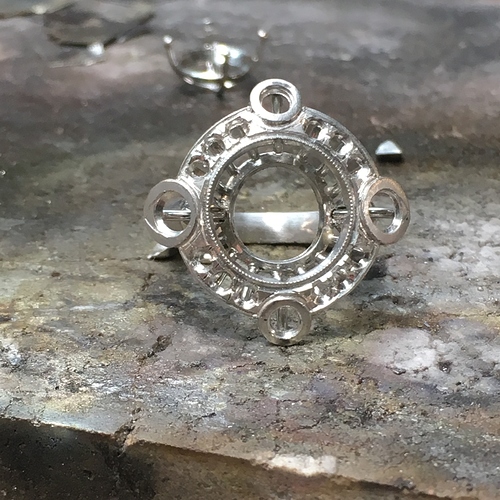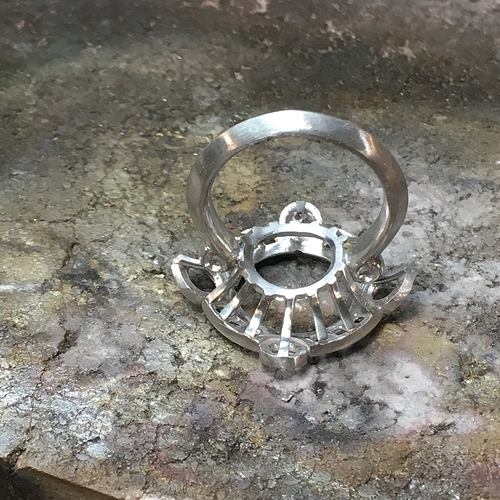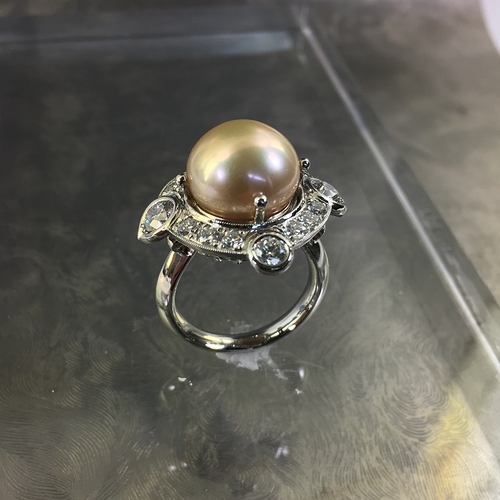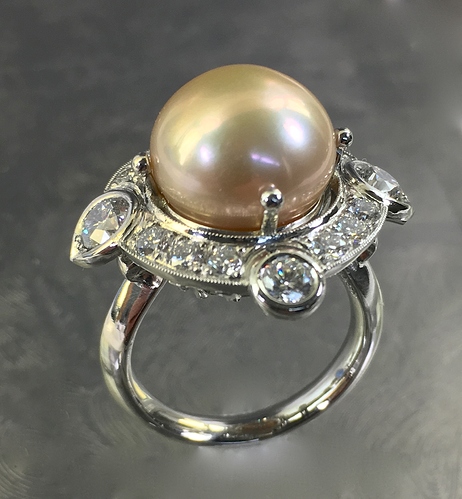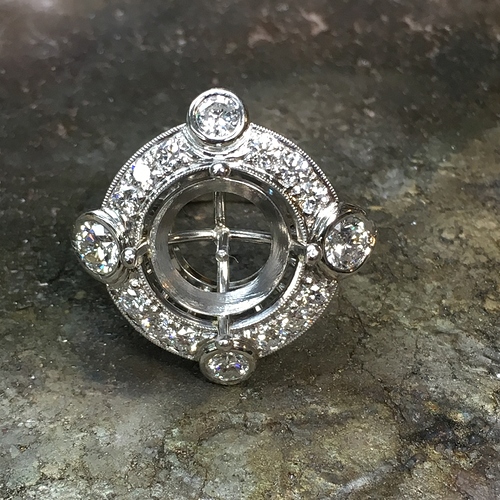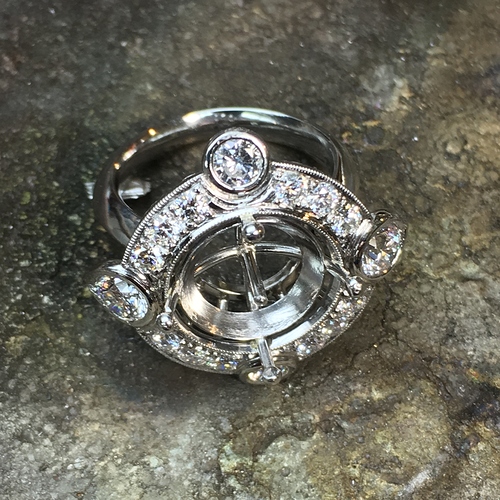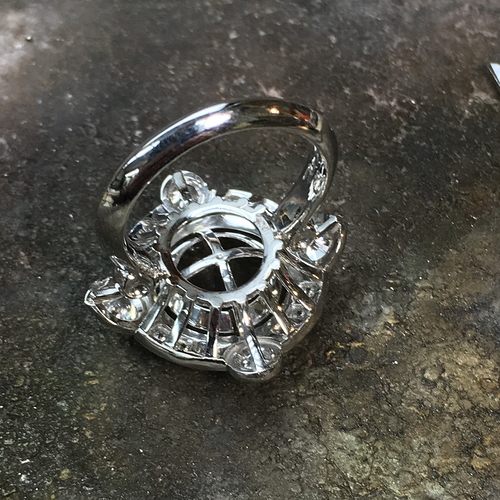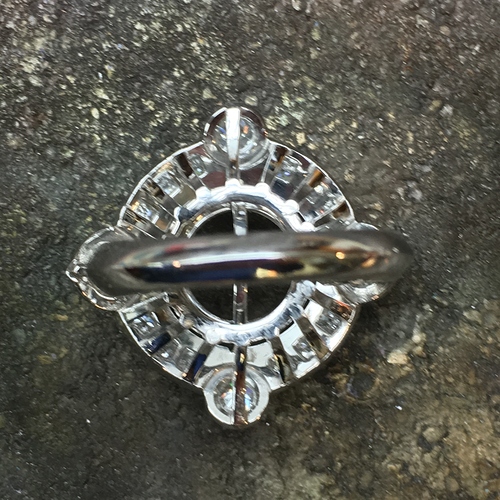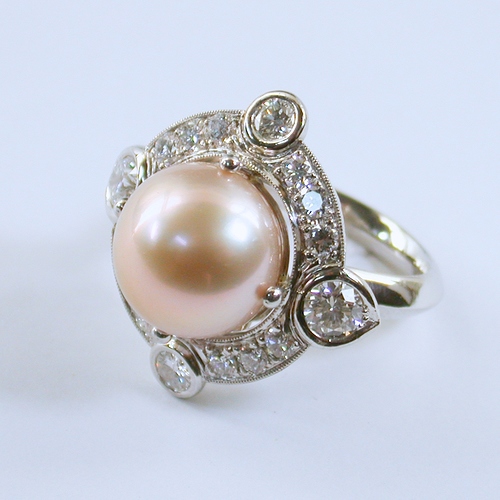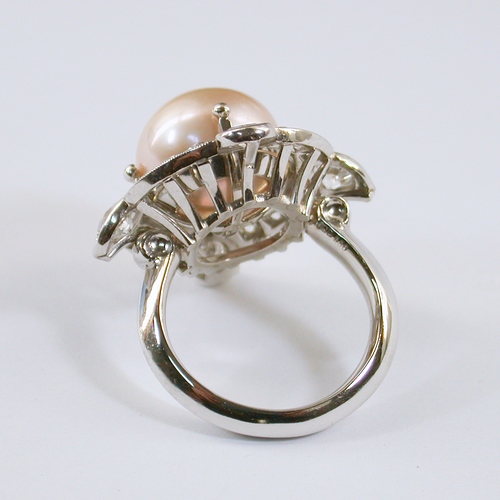We are a design studio first…
and though you primarily see the jewelry aspects, there’s more…
Here we have a cool project, an electrical cut-off switch for a 1929 Ford roadster.
Common to race cars is a switch on the outside right rear of a car that allows the electronics to be shut off in case of an accident. This will be accessed by the track safety crew so the possibility of fire is reduced.
This piece , created for Rick Strollo’s show winning car, is created in white bronze, chrome plated and enameled red for the lettering’s background. Fully functional too.
Enjoy (the diversion…)
Jim
Happy Thanksgiving,
and thank you-all for looking and sharing
Ho Ho Ho…
Here’s to a great season,
Thank you-all for the notes and taking the time to look in.
Best wishes,
Jim
(Baroque “Hammered” pearl. 19K, Black jade (coal)
Let’s Party…
Natural red-orange sapphire, Multi color sapphires,Tsavorite Garnet, Blue Zircon & Diamond.
Platinum, fabricated.
(Missed you-all…more to come)
Best,
Jim
We missed you and are glad you are back.
Is this a Padparadscha sapphire? Do you prefer not to use that word?
Wow Jim, simply stunning. As much as I love looking at the final piece, I also love examining all the steps you take in putting it together. I have a question, if I may: How do you keep the settings for the stones round, since you drill them before bending the plate?
Best,
Alec
Hi Alec & Betty.
Betty, the stone is most definitely redish orange, good pad would generally lean toward pink/salmon to a darker slightly cognac hue.
Alec…
(Hey)
They do turn a bit ovoid when formed, however I drill & seat everything undersize and re seat (still fractionally undersized) to round the inside, then shape the outside profile to match.
Thanks,
Jim
What was…is again…
Hi,
Here is a tale and a process.
As you view the many (MANY…) images, you are looking at two rings. The first (Pink Natural Pearl) was created in 1995. Hand fabricated in platinum with the rarest of the rare, a clean, round natural 11.25 mm pearl. This is bordered by 2 natural pink diamonds and D-E color, VVS1 & 2 round diamonds.
This piece went into a collection, and was dearly loved, until stolen several years ago.
Slightly fast forwarding to 2017 when, after several years of looking for a suitable replacement, a peach toned cultured 11.75 mm pearl was located.
So a replacement of sorts was created with directions to stay as close as possible to the original.
As you scroll through this , it sort of becomes like “Where’s Waldo”… there are differences. Some simply because the pearl was slightly bigger, others, like the use of two white diamonds on either side of the pearl instead of the two pinks.(Pink & peach are a so-so mix).
The sad note is the loss of the pink natural pearl, it was truly one of one, a natural anomaly and valued as such.
The peach pearl, though cultured is equally rare. It’s un-dyed and has great luster and orient. Pearls are my specialty and this is as unique as the pink in its own way.
Thanks for looking,
Enjoy,
Jim
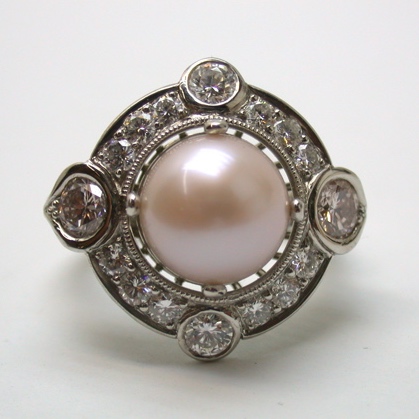
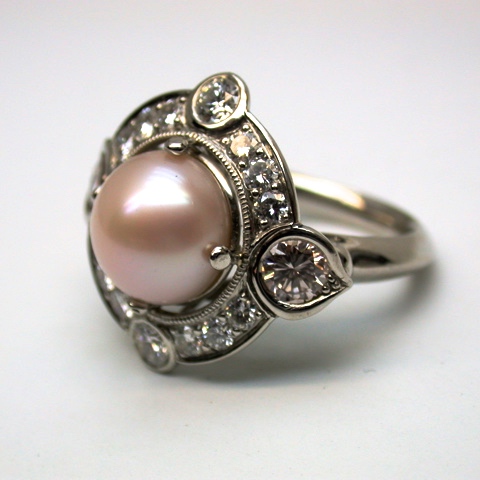
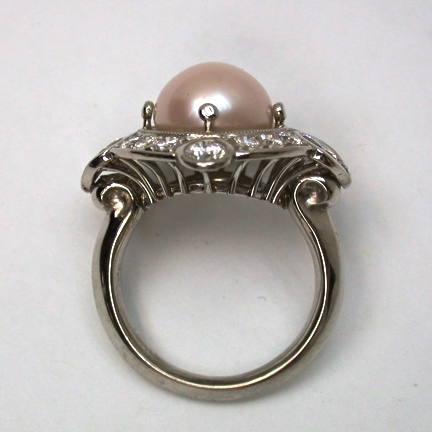
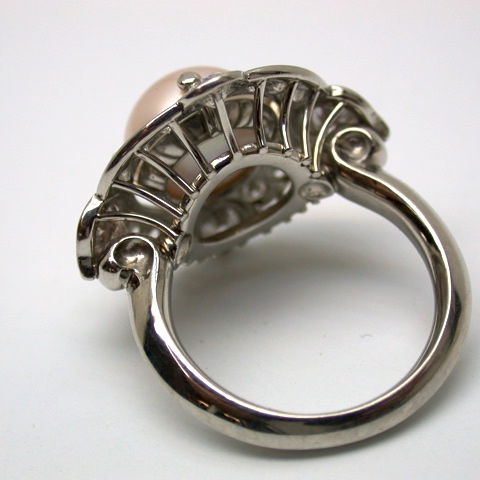 !
!
Good Evening Jim,
thank you for your detailed picture story.
A simple question,
- As pearls are organic, and have the limitations of this, maintenance of this ring requires a different approach to say, a similar ring but only with stones.
How does one clean? such a ring? something mild like tooth paste?and brush? One cannot put in an ultrasonic tank? surely?
The pearl has obviously been drilled by you to take the pin shown,so what adhesive do you use to keep it down onto its cradle,? as the 4 prongs? seem to be only just above the max diameter and seem to only support the pearl laterally.
The owner needs to be careful too in its use. What do you advise?
Ted.
Hi Ted
Great questions,
Cleaning pearls isn’t too tricky, The most destructive thing is ammonia, it will forever kill the nacre and leave a dull, mat finish.
I use an ultra sonic cleaner called “Dalco Red”.
There are others, I think Rio has a version of this as well. I get mine from Gamzon in NY.
Pearls can go into an ultrasonic with no issues, either cultured or natural. However simulates with a applied surface are risky, it’s easy to break the surface bond between the painted surface and the underlying bead.
No toothpaste, it’s too abrasive, however a tooth brush and soft-soap will also do the job.
The first pearl was not drilled, the second was. In either case I use “Gorilla” super glue, or if it’s an old pearl thats over drilled (too big a hole) I’ll use 2 part, 5 min. epoxy.
I make sure the hole is a near snug fit to the post, then force a bit of glue down the hole and wipe a bit on the post.
It sticks . I make my own posts in platinum keeping the as drawn texture. I’ve yet to have one come loose (55 years and counting…)
Watch, tomorrow morning someone will call with a loose pearl…
Pearls are surprisingly tough, soft to be sure, but I see far less damage than one would expect.
I’m working with one now that is carbon dated (university of Arizona & GIA) at (between) 300 BC to 900 AD, It has amazing luster. I’ll post photos when the piece is ready.
Thanks,
Jim
Magnifique, comme d’habitude.
One question on a small design change. Why did you decide to millgrain both top and bottom borders of the paved channel in the new one?
Hi Elliot,
I’m not smart enough to leave a good thing alone…
I do prefer the plainer border, I didn’t really notice until you pointed it out.
I’m always at pretty high magnification and sometimes can’t get the long view until I see the photos…
Thanks for noticing.
Jim
Just fantastic to see that all come together. Thanks again for showing such amazing work!
Erich
Just amazing, Jim. I’m in awe of this piece. It’s like a painting, something you can keep looking at and noticing more and more details.
Alec
Hi Jim
Most helpful reply re real pearls. but mop? or the large 6-8in dia ones, have you ever used it?
Back in the early 1970’s I chose to combine my deep enamel on fine silver pieces by using parts of the shells. I bought them from a London dealer, some 30 or so and must have cut up at least 20 of them. Still have all offcuts and shells here.
I used industrial tools, metal cutting band saws, band sanders and power tools to carve this nacre.
Polishing was always hard even with big kit. 3hp and 6in stitched sisal mops and hard cutting pol compos.
Results were just great, and Id then set the enamelled silver also using posts and 2pt epoxy into the sculptural pieces, mainly as pendants. My 1st 7 yrs were mainly enamelling on what ever product I could add it to.
Just one remaining from this time. Pic attached.This shell material has not deteriorated in any way.
just like pearl buttons. Have some lovely examples of these.
Also the mop majong chips beautifully engraved, circa 1850/60. Still tempted to mount these in a silver surrounding . Did you see the pics of the enamel on fine silver and gold work I did for Grima in London also in the 1970’s?
Ted.
Hi Ted,
Great pieces, I love the way MOP carves & your use of color is really striking.
MOP reacts to ammonia the same as the pearl it begets. I periodically use shell for elements, I polish with grey-star or bobbing compound & finish with whatever rouge I can grab.
I primarily use the shell from Tahiti ( Margarita Pinctafina ), mostly because of our connections to the growers. But like the Tahitian pearls, the color play of the shell is the best I’ve seen.
I’ve seen your enamel work, truly art. Engine turning (gilloche’) and enamel are becoming a lost art.
Thanks,
Jim
Hello Jim,
As usual, amazing work! I have a question on the millgraining. How close to the end of the run can you get with the wheel? Are some of the beads at the end done with a beading tool? If so, about how many? Just trying to get a better idea or how this is all done.
Thanks,
royjohn
Thanks for your comments re the enamelled pieces.
As your one at the top of this game, ill share some background info with you.
If you look through the enamel particularly the light blue pendant you will see the metal surface is radial lines from the center.
Its not engine turned and as you probably guessed, its done with a polished edge of a chasing hammer. Nor a graver!
Ive still the angled block and hammer I did all these on, its quite quick, around 10/15 mins in this case.60 to 80 blows per minuite.
The 999ag is 15/1000thin thick, then formed between one of 2 matching brass formers clamped together … The loop is riveted in, no soldering, and the enamel was from 'Schauer in Vienna. Thats some 1/8in thick and fully transparent.
Still have several pounds of it in all the colours (except red! ) here. Red in this formula is not possible despite spending 3 days with them on experiments.The only really clear thick deep red is on 999 gold. then its superb.
The zodiac is gold on a blue translucent on copper.
The enamel on the MOP pendant is mixed the light blue and a royal blue swirled when liquid with a s/steel wire whilst in the kiln.
The pallions came from Bayeler in Geneva. also no longer in business. Ive lots of these put by as well.
My plan at some time,! is to combine my enamelling with the minted designs ive comissioned.
Tomorrows work plan is to mint 25 off in sterling the viking cloak die for a customer in Norway, who found me from my posts on this forum. .there to go onto a Lapland “Sami” belt his wife is making from oak tanned reindeer leather.
Ill post pics of the finished 25 in a couple of days.
just love minting! and big hammers of course!.
The use of hammers enable me to forge the 8.5lbs of silver bowls.
It must have been a couple of yrs ago I posted some pics of the portable 1880’s drop hammer thats my main fast minting tool, in addition to a 250 ton hyd press.
Wrought work is really satisfying for me.
Ted.
Hi Royjohn (and Ted)…
As to the mill grain, the tools I have are ancient (Velkuir, can’t find them anymore…help anyone) their wheel diameter is 1.31 mm, sometimes I’ll finish with a beading tool, or, simply with a flat graver & burnish a bit. Either way you can’t spot the change.
Ted…
The world is your hammer (and it still could be bigger)
Great work and I love the stories… Keep-um coming.
Best
Jim
Jim, mill grain tool, …help? Velkuir? Swiss?
OK, so what uses such a very, dead hard wheel?
I know its not 1.3mm dia but 3mm is not difficult.
there are 2 types of wheel this size, and there used in glass cutting, in fact its not cutting as such its stress scouring.
there either in steel, or tungsten carbide. These cutters cost pennies.
The steel could be annealed and softened, then a 1/2 round filed indent made on the rim could work, then re harden…
The TC tho would need to be ground with diamond and the makers of the printed circuit board TC drills have the micro diamond wheels to do this. Drills this small ie down to less than 1/2mm are used for drilling glass reinforced pcb’s.
Could be organised ,would need a bit of chasing around to pull it together.
Any chance of a pic of your mill grain wheel? Should then think of something .
just a couple of thoughts
also the hammer is my world!
Ted.
